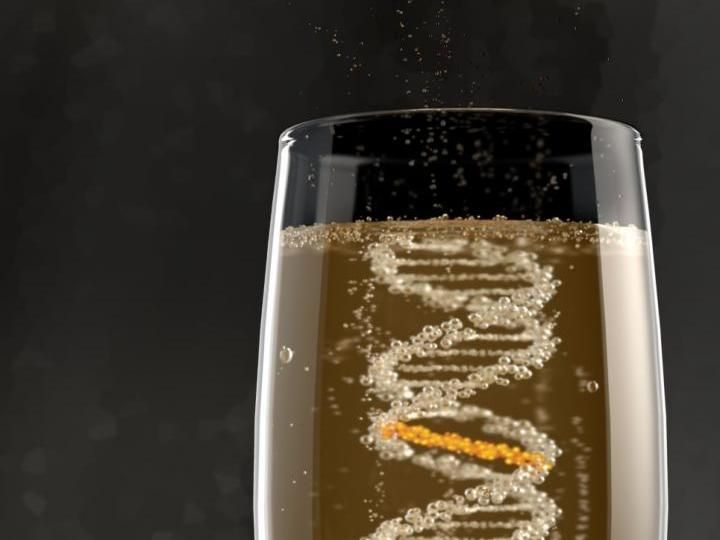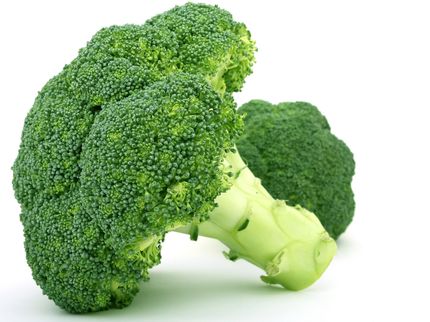New repair mechanism for alcohol-induced DNA damage discovered
Knowledge underlines the link between alcohol consumption and cancer
Researchers of the Hubrecht Institute (KNAW) in Utrecht, The Netherlands, and the MRC Laboratory of Molecular Biology in Cambridge, United Kingdom, have discovered a new way in which the human body repairs DNA damage caused by a degradation product of alcohol. That knowledge underlines the link between alcohol consumption and cancer. The research groups of Puck Knipscheer and Ketan J. Patel worked together on this study and published the results in the scientific journal Nature on the 4th of March.

Artist impression of an alcohol-induced interstrand crosslink (ICL). The ICL is the yellow connection between both DNA strands, making them stick together.
Image copyright: MRC Laboratory of Molecular Biology or MRC LMB
Our DNA is a daily target for a barrage of damage caused by radiation or toxic substances such as alcohol. When alcohol is metabolized, acetaldehyde is formed. Acetaldehyde causes a dangerous kind of DNA damage - the interstrand crosslink (ICL) - that sticks together the two strands of the DNA. As a result, it obstructs cell division and protein production. Ultimately, an accumulation of ICL damage may lead to cell death and cancer.
Defense against DNA damage
Thankfully, every cell in our body possesses a toolkit with which it can repair this type of damage to the DNA. The first line of defense against ICLs caused by acetaldehyde is the ALDH2 enzyme, that largely breaks down acetaldehyde before it causes any harm. However, not everyone profits from this enzyme - about half of the Asian population, more than 2 billion people worldwide, possess a mutation in the gene coding for this enzyme. Because they are not able to break down acetaldehyde, they are more prone to develop alcohol-related cancer.
New line of defense
Scientists from the groups of Puck Knipscheer (Hubrecht Institute) and Ketan J. Patel (MRC Laboratory of Molecular Biology) studied the second line of defense against alcohol-induced ICLs: mechanisms that remove the damage from the DNA. The investigators studied these mechanisms using protein extracts made from the eggs of the clawed frog (Xenopus laevis), an animal model commonly used in biology research. By using these extracts to repair an ICL formed by acetaldehyde, they discovered the existence of two mechanisms that repair ICL damage: the previously known Fanconi anemia (FA) pathway and a novel, faster route. These two mechanisms differ from each other: in the FA pathway the DNA is cut to remove the ICL, whereas the enzymes in the newly discovered route cut the crosslink itself.
Specific damage
With this research, the scientists provide a mechanistic sneak peek in the process of DNA damage repair. 'We now know that there are multiple ways in which the body can repair ICLs in the DNA', says co-lead author Puck Knipscheer. She thinks that this type of research may lead to a better understanding of treatment for alcohol-related types of cancer. 'But before we can do that, we first have to know exactly how this novel mechanism for ICL repair works.'
Original publication
Other news from the department science

Get the life science industry in your inbox
By submitting this form you agree that LUMITOS AG will send you the newsletter(s) selected above by email. Your data will not be passed on to third parties. Your data will be stored and processed in accordance with our data protection regulations. LUMITOS may contact you by email for the purpose of advertising or market and opinion surveys. You can revoke your consent at any time without giving reasons to LUMITOS AG, Ernst-Augustin-Str. 2, 12489 Berlin, Germany or by e-mail at revoke@lumitos.com with effect for the future. In addition, each email contains a link to unsubscribe from the corresponding newsletter.


















































